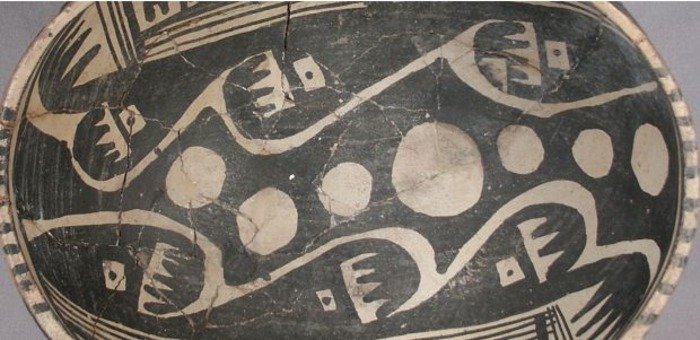Researchers analyzed thousands of artifacts like this ceramic bowl to learn about social networks in the pre-Hispanic Southwest between A.D. 1200 and 1450. Credit: Mathew Devitt, Arizona State Museum
TUCSON, March 25 (UPI) -- Long before Twitter and Facebook, societies maintained social networks even when the only network "traffic" was people moving on foot, U.S. researchers say.
Scientists at the University of Arizona studying late pre-Hispanic American Southwest societies said their findings show people of that period were able to maintain surprisingly long-distance relationships with nothing more than their feet to connect them.
UA anthropologist Barbara Mills and colleagues analyzed more than 800,000 painted ceramic and more than 4,800 obsidian artifacts dating from A.D. 1200-1450, uncovered from more than 700 sites in what is now Arizona and western New Mexico.
Analysis of the materials showed how social networks shifted and evolved during a period that saw large-scale demographic changes, including long-distance migration and coalescence of populations into large villages, a university release reported Monday.
Similar types of painted pottery were being created and used in villages as far as 150 miles apart, suggesting people were maintaining relationships across relatively large distances even when the only mode of transportation was walking, the researchers said.
"That really shocked us, this idea that you can have such long distance connections. In the pre-Hispanic Southwest they had no real vehicles, they had no beasts of burden, so they had to share information by walking," Mills said.
"It changes our picture of the Southwest."















